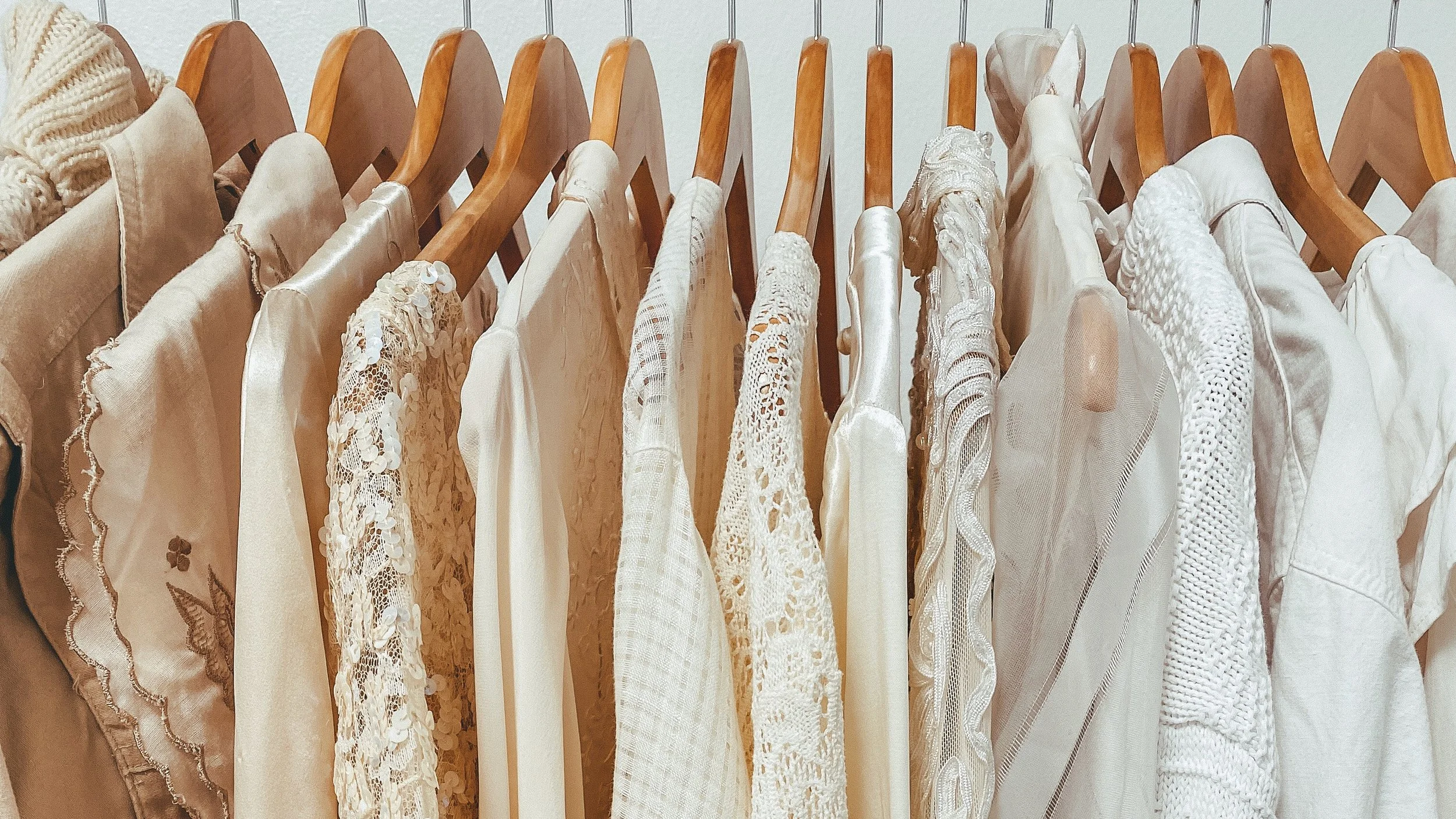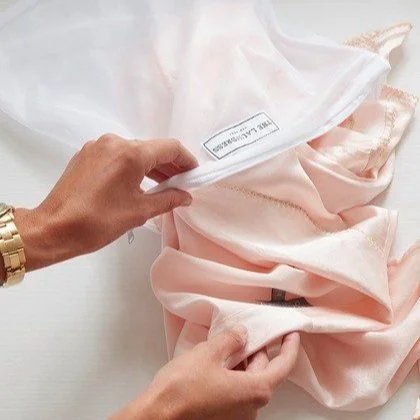8 Ways to Care for Your Clothing and the Planet
Protecting Your Wardrobe and the Planet
Veering away from fast fashion for the sake of the planet is on many of our to-do lists. From the massive use of water needed for textile dying, to the introduction of microfibers into our waterways, the effects of clothing production on the environment can be devastating.
Along with buying less, buying better has increasingly come into our collective consciousness. Even when purchased secondhand, well made clothing more than likely comes at a premium price. It’s logical and responsible that we would take care of these garments with more attention than we would a fast fashion piece. Here’s are 8 ways to care for your clothes and the planet.
Wear Clothes More Than Once Before Washing
Washing less often is beneficial in more than one way. The quality of your clothes is better maintained since the dyes aren’t being rinsed as frequently.
In the context of environmental sustainability, 50% of the water used in the life cycle of a pair of jeans comes from washing. Levi’s CEO Chip Bergh mentioned this in a sustainability talk with Fortune magazine while pointing to his own year-old pair of jeans and declaring that they’d never been washed.
Most of us will not go a year without washing an item clothing but sometimes simply spot cleaning might be enough for it to truly feel or even smell clean. Just
making the effort to simply wash less, to whatever extent feels possible for you, makes a huge difference. As in a 40 gallons of water per load difference, according to the National Park Service.
Hand Wash When Possible
Hand washing your clothes is another tried and true way to maintain quality. Any sink or tub works for hand washing clothes but our go-to combo is the Wash Tub Basin and Delicate Wash from The Laundress. The basin makes hand washing even easier as it can be used anywhere and the delicates detergent is great for silk, lace and other delicate fabrics - even those marked dry clean only. Not to mention, The Laundress products are plant-derived, non-toxic, allergen-free and smell like heaven.
Bonus: Here’s a handy reference on how to hand wash every type of fabric.
Use Organic and Sustainable Laundry Detergent
Laundry detergents contain many synthetic chemicals that are harmful to our bodies, the environment and our clothes. Even the naturally occurring ingredients, such as phosphates, cause harm by creating algae in our freshwater systems. This algae uses up oxygen supplies in the water, eventually ruining the ecosystem.
Using organic and sustainable detergent brands, like Kind, is a great alternative. Kind laundry detergent sheets are free of chemicals and zero waste. The ingredients are plant derived and biodegradable, and the laundry sheets can be used with hand washing or with a top or front loader.
Wash With Cold Water
When compared to using warm or hot water, cold water does the least amount of damage to your clothes so they’ll last much longer. If you’re spending a bit more and buying quality pieces, that’s exactly what you want. Cold water does not break down the dyes or fabrics as quickly so your colors will stay vibrant longer and your clothes will hold their shape and not shrink or stretch out. Contrary to popular belief, hot water can also set stains whereas cold water helps lift tough substances from fabric. The best part about washing in cold water is how eco-friendly it is. It’s estimated that 75 percent of the energy used in a wash cycle is heating the water so just by washing in cold water, you can reduce your energy bills and keep your clothes looking new.
Use a Delicates Bag
Using a delicates bag can protect your garments from harsh agitation and snagging and they aren’t just for bras and undies. You can use washing bags for woven garments, denim and more. We like this mesh set from The Laundress that comes with a small bag for intimates and a larger bag for items like blouses and sweaters.
Make Your Own Laundry Detergent
While using an organic and biodegradable laundry detergent is great, making your own detergent checks that box and can be kinder to your wallet. Save the money you would have spent to invest in quality, slow fashion pieces or whatever else is on your wishlist.
There are lots of recipes for DIY laundry detergent online. Often powdered, most recipes call for Borax, baking soda, and the optional addition of a grated castile bar soap and essential oil such as lemon or lavender to give it a fresh scent.
Hang Clothes to Dry
Dryers can create micro abrasions on your clothes, causing them to wear out more quickly and it’s no secret that dryers use a lot of energy. Allowing your clothes to air dry is both better for the garments and for the environment.
Whether you hang them outside on a line or use a drying rack indoors, air drying achieves the goal of getting clothes dry without the negative environmental impacts of excess electricity use.
Pro tip: If you don’t like the feel of air dried laundry, before folding, toss them in the dryer for 3-5 minutes to help soften and release wrinkles.
Purchase Energy Efficient Machines
One of the most effective ways to cut back on water use is to use an energy efficient washing machine and dryer. Like all large appliances, this can be an expensive purchase, but the water and energy saved benefits the earth in a significant way and can save you money in the long run.
The National Parks Service puts the average water use at 41 gallons per load when using a traditional washing machine. A good energy efficient machine can thoroughly clean your clothes using as little as ten gallons, and an efficient dryer uses 25% less energy.
Energy efficient washing machines are also designed to be gentler, which can extend the amount of wear you get out of each garment.








